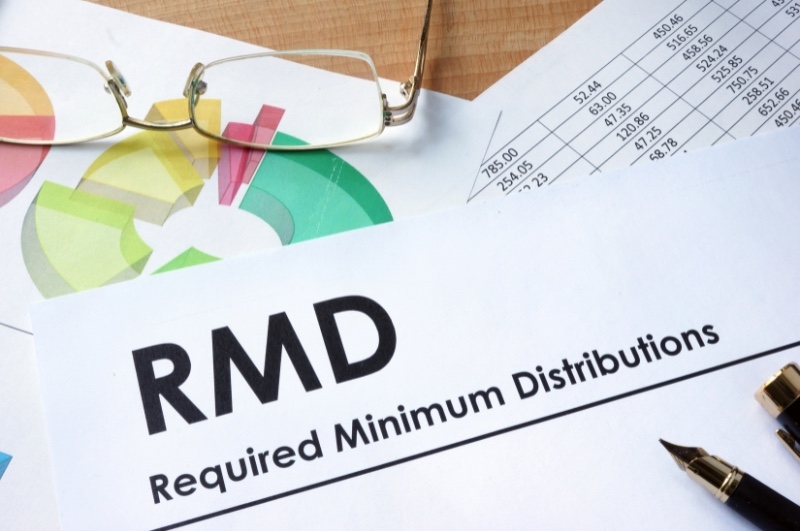By Brent Matthew
Financial surprises are rarely welcome, especially in retirement. But many retirees get blindsided when they find out that taxes remain a big expense even though they’ve stopped working. This situation creates a need for careful tax planning.
Tax bills can come from several sources in retirement. Taking distributions from retirement funds, Social Security benefits, and capital gains from investments all come with tax obligations. Getting a clearer picture of retirement taxes is an area many need help with.
Scottsdale Wealth Advisory conducts proactive tax planning that can help you keep your hard-earned nest egg intact. We specialize in lowering our clients’ tax exposure so they can enjoy the retirement they deserve.
Key Areas Where Retirees Face Tax Planning Challenges
Many retirees are surprised to find that taxes remain a significant part of their financial picture, and in some cases, they’re even more complex than during their working years. Here are some of the most common tax-related obstacles retirees face:
- Required minimum distributions (RMDs) from traditional IRAs and 401(k) plans are fully taxable and can be large enough to push retirees into higher tax brackets. These withdrawals are mandatory and can’t be deferred indefinitely.
- Social Security benefits become taxable when total income (including RMDs, pensions, and investment income) exceeds certain thresholds. This often catches retirees off guard, especially those who expected those benefits to be tax-free.
- Investment income such as interest, dividends, and capital gains is subject to taxes that can reduce the net return on your portfolio. In some cases, even tax-efficient investments can unexpectedly affect your taxable income.
- Medicare premiums are tied to income, and many retirees don’t realize that higher income levels trigger IRMAA (Income-Related Monthly Adjustment Amount) surcharges. These can significantly increase healthcare costs in retirement.
- Estate and legacy planning present their own set of tax challenges. Retirees who want to pass wealth to heirs must navigate estate taxes, account types, and tax-efficient transfer strategies to minimize the burden on the next generation.
- The ever-changing tax code makes it difficult to plan ahead. Even those who felt confident in their retirement strategy can be thrown off by shifting laws and regulations.
These are just a few of the ways taxes can impact your retirement income and long-term financial security. The good news? With proactive and personalized tax planning, many of these challenges can be managed or avoided entirely.
Strategies to Minimize Taxes in Retirement
Some areas a tax-focused financial advisor can help with include the following:
Limit Your Exposure to the 3.8% Medicare Surcharge Tax
If your income is over $200,000 (single) or $250,000 (married), you could be hit with a 3.8% Medicare tax on your investment income. This includes things like interest, dividends, capital gains, rental income, and royalties. The tax applies to whichever is smaller: your total investment income or the amount your income goes over the limit.
If you’re close to these income levels, there are ways to reduce the tax bite. Start by looking at how tax-efficient your investments are. Moving certain assets into retirement accounts and using tax-loss harvesting can help. You might also consider municipal bonds since their interest is usually tax-free. If you’re selling something with a large gain, using an installment sale can spread out the income. And if you’re dealing with real estate, a like-kind exchange could delay the taxes owed on gains.
Roth Conversions
Roth IRAs offer tax-free withdrawals in retirement, which can be a valuable part of your overall income plan. But if your income is too high, you can’t contribute directly. One workaround is to convert traditional IRA assets to a Roth. This does trigger income taxes, so timing matters. Low-income years (like the gap between retiring and claiming Social Security) can be a smart window to do a conversion. Just keep an eye on your tax bracket so the conversion doesn’t bump you into a higher rate than expected.
Using the 0% Long-Term Capital Gains Bracket
If your income falls below certain levels, you may be able to realize long-term capital gains without paying federal tax. For 2025, gains on assets held over a year are taxed at 0% if your taxable income is under $47,025 (single) or $94,050 (married filing jointly). Above those thresholds, the rate jumps to 15%, and eventually to 20% at higher income levels.
There are ways to stay within the 0% range, like increasing deductions or making deductible IRA contributions. Just be mindful that realizing gains, even tax-free ones, can still affect your adjusted gross income. That, in turn, might influence how your Social Security is taxed or trigger state-level taxes, depending on where you live.
Planning Withdrawals From Inherited IRAs
New rules now require most non-spouse beneficiaries to fully distribute inherited IRAs within 10 years. There’s no annual withdrawal minimum in most cases, but the entire account has to be emptied by the end of that window.
Waiting too long can backfire. If the account grows over time and you withdraw everything in the final year, it could create a large tax bill and push your income into a higher bracket. It might also trigger other taxes tied to income thresholds, like the Medicare surcharge.
If you’ve inherited an IRA from someone other than your spouse, it’s worth mapping out a withdrawal plan that spreads out the income and avoids a spike in taxes later on.
Making the Most of Charitable Giving
Giving to charity can be one of the more flexible ways to manage your tax bill, especially if you give with intention. You can generally deduct donations up to 60% of your adjusted gross income. If you’re holding appreciated assets like stocks, donating those directly can be even more effective. You avoid the capital gains tax and still deduct the full market value.
On the flip side, if an asset has lost value, you’re better off selling it first, claiming the capital loss, and donating the cash instead.
For more advanced planning, donor-advised funds and charitable lead annuity trusts can help front-load deductions—something to think about if you’re managing a Roth conversion or a sizable IRA withdrawal in the same year.
And if you’re 70½ or older, qualified charitable distributions (QCDs) are worth a look. In 2025, you can give up to $108,000 directly from a traditional IRA to a qualified charity. Couples can give up to $216,000 annually. While QCDs don’t come with a deduction, they keep the distribution out of your taxable income.
QCDs are especially helpful once RMDs kick in. Just keep in mind: the first dollars out of your IRA count toward your RMD, so the QCD needs to happen before any other withdrawals if you’re aiming to reduce your taxable income.
How Scottsdale Wealth Advisory Helps
At Scottsdale Wealth Advisory, we help retirees keep more of what they’ve earned through comprehensive tax planning built directly into their retirement strategies. Our process is proactive and focuses on minimizing tax surprises, helping you make informed decisions every step of the way.
We also believe financial literacy leads to better outcomes. That’s why we take the time to educate, explain, and collaborate with the other professionals on your team, including CPAs and estate attorneys, to build a coordinated, tax-efficient plan.
Ready to take the next step? Schedule your complimentary financial coaching session by calling (480) 247-9090, emailing info@SWAFirm.com, or booking directly at calendly.com/BrentMatthew.
About Brent
Brent Matthew is the founder, CEO, and portfolio manager at Scottsdale Wealth Advisory, a full-service fiduciary retirement planning firm serving pre-retirees and retirees across Arizona and multiple states. With a strong commitment to always putting clients first, Brent leads the firm in developing comprehensive, tax-efficient financial plans tailored to each family’s unique goals. As portfolio manager, he is responsible for researching investment, annuity, and life insurance strategies and building smart asset allocations that reflect both long-term growth and risk management.
Brent is driven by a core belief: “The success of this firm will be measured by the success of the families it represents.” That client-first approach has guided his work since the beginning. He is currently enrolled at the College for Financial Planning and is on track to earn his CERTIFIED FINANCIAL PLANNER® designation. He also holds his Series 65 license and Arizona Life and Health Insurance Producers License.
Outside the office, Brent embraces the Arizona outdoors with “lil B” and their two pomskies, Heimo and Kota. Whether he’s hiking, fishing, dirt biking, skiing, golfing, kayaking, or skeet shooting, Brent finds balance and joy in staying active. He’s also a fan of CrossFit, brunching, and cruising the Phoenix canal system on his beach cruiser—usually with classic tunes from the Marshall Tucker Band, Gordon Lightfoot, or Crosby, Stills & Nash playing in the background. To learn more about Brent, connect with him on LinkedIn.







